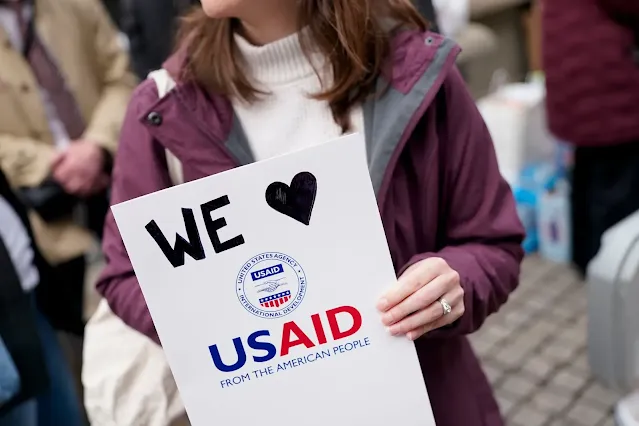Study Warns Over 14 Million Lives at Risk Due to U.S. Foreign Aid Cuts
More than 14 million of the world’s most vulnerable people, a third of them small children, could die by 2030 because of the Trump administration’s dismantling of US foreign aid, research projected on Tuesday.
The study in the prestigious Lancet journal was published as world and business leaders gather for a United Nations conference in Spain this week hoping to bolster the reeling aid sector.
The US Agency for International Development (USAID) had provided over 40 percent of global humanitarian funding until Donald Trump returned to the White House in January.
Two weeks later, Trump’s then-close advisor — and world’s richest man — Elon Musk boasted of having put the agency “through the woodchipper”.
The funding cuts “risk abruptly halting — and even reversing — two decades of progress in health among vulnerable populations”, warned study co-author Davide Rasella, a researcher at the Barcelona Institute for Global Health (ISGlobal).
“For many low- and middle-income countries, the resulting shock would be comparable in scale to a global pandemic or a major armed conflict,” he said in a statement.
Looking back over data from 133 nations, the international team of researchers estimated that USAID funding had prevented 91.8 million deaths in developing countries between 2001 and 2021.
That is more than the estimated number of deaths during World War II, history’s deadliest conflict.
• HIV, malaria to rise –
The researchers also used modelling to project how funding being slashed by 83 percent — the figure announced by the US government earlier this year — could affect death rates.
The cuts could lead to more than 14 million avoidable deaths by 2030, the projections found.
That number included over 4.5 million children under the age of five — or around 700,000 child deaths a year.
For comparison, around 10 million soldiers are estimated to have been killed during World War I.
Programmes supported by USAID were linked to a 15-percent decrease in deaths from all causes, the researchers determined.
For children under five, the drop in deaths was twice as steep, at 32 percent.
USAID funding was found to be particularly effective at staving off preventable deaths from disease.
There were 65 percent fewer deaths from HIV/AIDS in countries receiving a high level of support compared to those with little or no USAID funding, the study found.
Deaths from malaria and neglected tropical diseases were similarly cut in half.
Study co-author Francisco Saute of Mozambique’s Manhica Health Research Centre said he had seen on the ground how USAID helped fight diseases such as HIV, malaria and tuberculosis.
“Cutting this funding now not only puts lives at risk — it also undermines critical infrastructure that has taken decades to build,” he stressed.
A recently updated tracker run by disease modeller Brooke Nichols at Boston University estimates that nearly 108,000 adults and more than 224,000 children have already died as a result of the US aid cuts.
That works out to 88 deaths every hour, according to the tracker.
• ’Time to scale up’ –
After USAID was gutted, several other major donors, including France, Germany and the UK, followed suit in announcing plans to slash their foreign aid budgets.
These aid reductions, particularly in the European Union, could lead to “even more additional deaths in the coming years,” study co-author Caterina Monti of ISGlobal said.
But the grim projections are based on the current amount of pledged aid, so could rapidly come down if the situation changes, the researchers emphasised.
Dozens of world leaders are meeting in the Spanish city of Seville this week for the biggest aid conference in a decade.
The United States, however, will not attend.
“Now is the time to scale up, not scale back,” Rasella said.
Before its funding was slashed, USAID represented 0.3 percent of all US federal spending.
“US citizens contribute about 17 cents per day to USAID, around $64 per year,” said study co-author James Macinko of the University of California, Los Angeles.
“I think most people would support continued USAID funding if they knew just how effective such a small contribution can be to saving millions of lives.”
AFP

















0 Comments